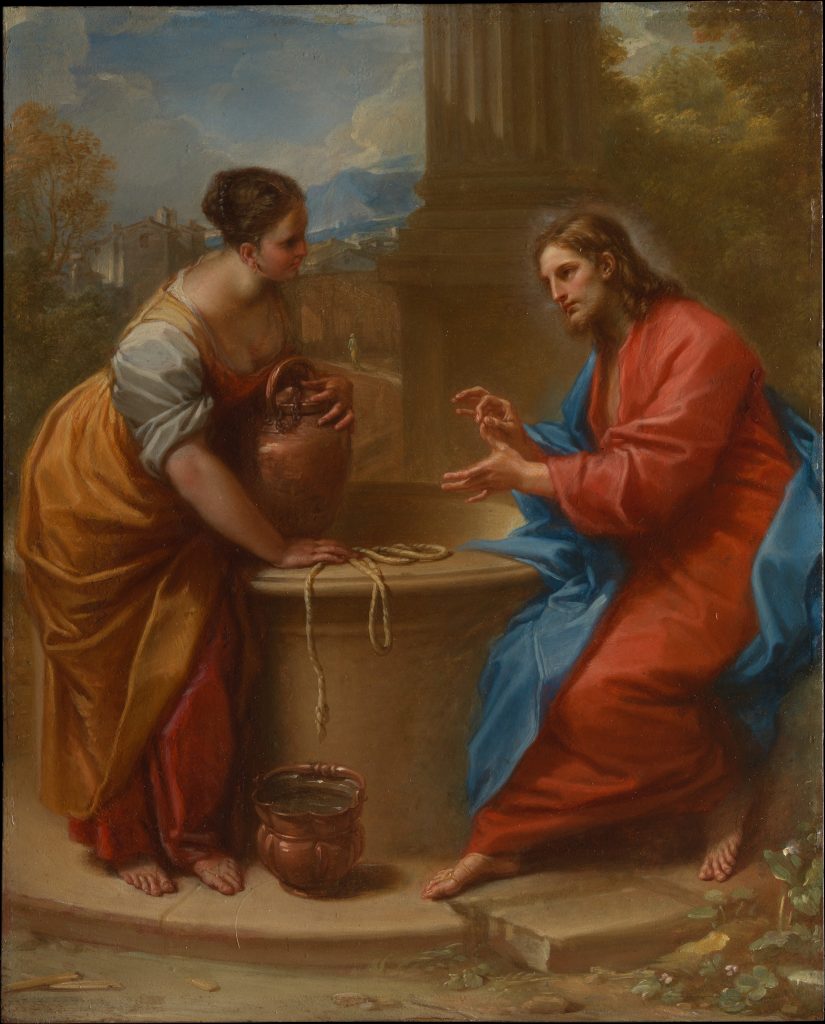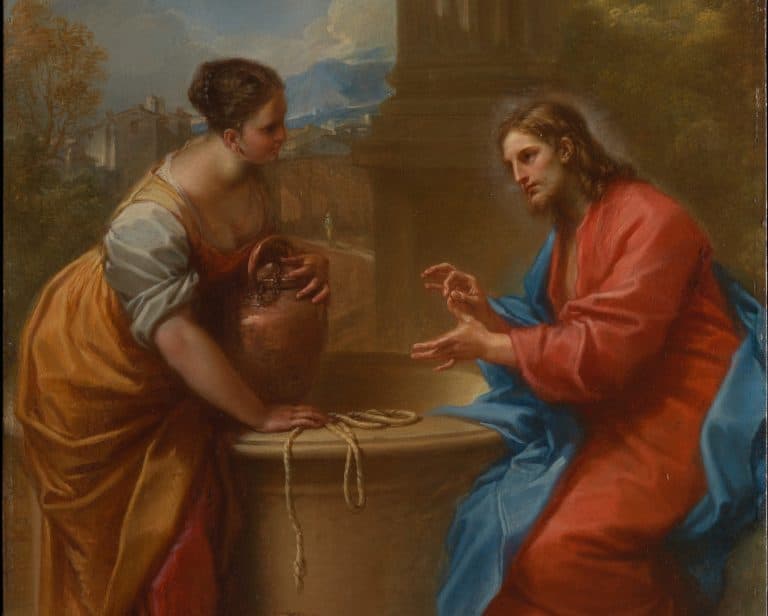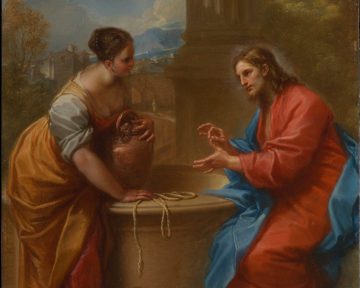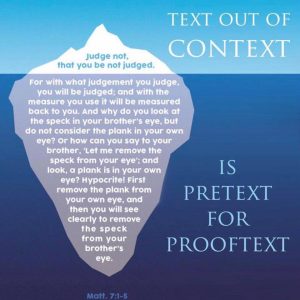
Christ and the Woman of Samaria, 1715–20
Oil on copper; 15 × 12 1/8 in. (38.2 × 30.9 cm)
The Metropolitan Museum of Art, New York, Purchase, Rogers Fund, by exchange, 2015 (2015.645)
http://www.metmuseum.org/Collections/search-the-collections/702752
How can I become more Christlike?
Of all the topics we cover with our young women, we could teach this lesson every week and always find new dimension and application. The outgrowth of trying to be more Christlike is as expansive as the universe itself. A young woman who is trying to be Christlike will be keeping her covenants, serving others, studying the word of God, praying, seeking Divine revelation, treating others with love and kindness, respecting her body as a temple of God, repenting and forgiving, teaching others, developing her spiritual gifts, exercising good judgement when making choices, developing her mind and intellect, participating in temple ordinances and worship, forming healthy relationships with others, the list goes on and on. It stands to reason that if we wish to help our Young Women develop the above skills or behaviors, it is rooted in teaching them to seek after Christlike attributes. To adopt Christlike attributes in our own thoughts, words, and behaviors is to make our selves more like God. This is our highest, holiest pursuit: a eternal life like God has, as one who has progressed toward becoming God-like. Missions, Marriage and Motherhood are all vehicles on the path to eternal salvation, but should never take the place of the ultimate destination of being like God and inheriting eternal life.
Young Women have the chance to develop Godlike attributes every day. By studying the words, life and actions of the Savior, Jesus Christ, they can more easily internalize his example and apply it to their own life’s circumstances.
What are the Christlike attributes?
The most commonly referenced collection of Christlike attributes is found in D&C 4:5-6
5. And faith, hope, charity and love, with an eye single to the glory of God, qualify [her] for the work. 6. Remember faith, virtue, knowledge, temperance, patience, brotherly kindness, godliness, charity, humility, diligence.
Additionally, one of the most impactful lessons on the character and attributes of God is found in the decanonized Lectures on Faith by Joseph Smith. In the third and fourth lectures, we find these descriptors of God’s personality: creator, merciful, unchanging, truth, no respecter of persons*, love, knowledge, faith, justice, judgement, mercy, truth.
*regards all people as equal, not influenced by wealth or status
Preparations for the teacher
Either on the chalkboard, or on paper signs hanging in the room, make a list of as many (or all) of the Christlike attributes you’ll study that day. Prepare several scriptural examples from the life of Jesus Christ that represent a variety of attributes. Either as a class or divided into groups, read the passages, identify the attributes, and make modern-day application to parallel issues or situations the young women may face.
Introducing the Doctrine
Begin the lesson by reading the following passages, (with gender inclusive pronouns)
A good “search” question might be, “What kind of person is Alma asking us to be?”
“And now behold, I ask of you, my [sisters] of the church, have ye spiritually been born of God? Have ye received his image in your countenances? Have ye experienced this mighty change in your hearts? Do ye exercise faith in the redemption of him who created you? Do you look forward with an eye of faith, and view this mortal body raised in immortality, and this corruption raised in incorruption, to stand before God to be judged according to the deeds which have been done in the mortal body? I say unto you, can you imagine to yourselves that ye hear the voice of the Lord saying unto you, in that day: Come unto me ye blessed, for behold, your works have been the works of righteousness upon the face of the earth? … can ye look up to God at that day with a pure heart and clean hands? I say unto you, can you look up, having the image of God engraved upon your countenances?” Alma 5:14-16, 19
Discuss what it means to “have the image of God engraved upon your countenance” = we look like God because we have progressed toward being like him (Them) in our personality characteristics and actions.
Search question for this passage, “What is the main characteristic that can make us more like Jesus Christ?”
“Wherefore my beloved [sisters,] pray unto the Father with all the energy of heart, that ye may be filled with this love, which he hath bestowed up all who are true followers of his Son, Jesus Christ; that ye may become the [daughters] of God; that when he shall appear we shall be like him, for we shall see him as he is; that we may have this hope; that we may be purified even as he is pure.” Moroni 7:48
True followers of Jesus Christ are those who strive to be like him by having their actions motivated by Love.
Learn Together
Now begin the analysis and application of stories from the life of Jesus Christ. With each passage, ask the young women to relate the thoughts, words and actions of Jesus Christ to one or more of his attributes, then ask them to create a parallel situation (hypothetical or real) where they might exercise the same attribute in a similar way. Draw from the list of prepared scriptural excerpts or invite the young women to share their own example.
- Luke 2:1-11, Jesus turning water into wine. Shows faith, love, kindness to family members.
- John 8:1-11, Jesus forgives the woman taken in adultery. Shows mercy, love, no respecter of persons, judgement, charity.
- John 6:5-14, Jesus feeds the 5,000. Shows Love, service to others, faith, brotherly kindness, charity.
- John 10:16, One Shepherd. Shows No respecter of persons, love, brotherly kindness
- John 11:1-46, Jesus raises shows compassion to Martha and Mary, raises Lazarus from the dead. Shows faith, patience, love, compassion, humility, mercy, healing.
- 3 Nephi 17: 7-9, 21 Jesus blessing and healing the Nephites and their children. Shows Faith, charity, kindness, charity, service to others.
- Plus as many more as you have time or inclination to include!
Show the video, Christlike Attributes and discuss any of the other stories and attributes brought up in the video not already covered by class discussion.
The lesson plan on lds.org suggests handing out the Attribute Activity from the Preach My Gospel manual. I think this sheet is a nice way to make a personal inventory of where we stand in our quest to become more like God, but it does have the possibility of making the girls feel as though they don’t measure up, or that they’re not good enough rather than help them feel motivated to improve. Depending on the ages and maturity levels of the girls in your class, you might do this activity together (without the number ranking system).
As a way to build self-esteem and sisterhood among the girls, verbally discuss each of the virtues listed and highlight each girl in the class for one of the attributes they exhibit. Have the girls describe the positive attributes they see in each other, taking care to make sure that every girl gets mentioned.
Include quotes or experiences as time permits.
Close by encouraging the girls to examine their own lives and patterns of behavior for attributes of Jesus Christ and to try to follow his example in all they do and say.
Re-read Moroni 7:48.
Sing, “I’m Trying to Be like Jesus”






2 Responses
Too right–this is *the* lesson for our lives, no matter what our age. I really like your thoughtful treatment. The YW leaders in our ward (from what I can see) do a phenomenal job — I’m going to see if they know that this series is a great resource for the teachers.
So lovely. Thank you for sharing! I love your point at the beginning that this lesson is basically the lesson we can keep learning for the rest of our lives.